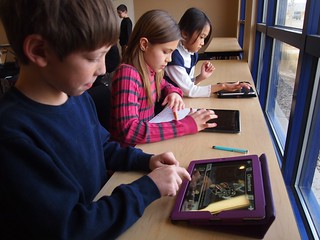
photo credited to Kathy Cassidy Flickr
This semester in the class EME2040 Introduction to Technology for educators I did many
assignments that made my learning with technology expand. When I first started this class reading
the syllabus just scared me. There was assignments that said blogs, wiki, portfolio, and web quest. I
was like wow I never heard of these technology sources before. As we started the class and I saw
what a blog was I was like wow I never thought it will be fun to write and use web.20 tools too. It
took me some times to get use to those tools. I am glad I was able to learn them because I will be
using those in my lesson plans when I become a teacher. Wiki was something I never heard of before.
It was fun to learn about it and to do many assignments on it. It was very easy to use the wiki when
we had to do are teacher portfolio because it was all there. A web quest was interesting I never had
created a lesson plan through the internet like that. When you know how to use these technology
resources it can make your lesson plans so much fun. My favorite assignment was creating the
portfolio. I really enjoyed learning how to create a home webpage for my class. That is something I
will definitely use in the future. I never thought technology was so important in a classroom before.
The only thing I would've liked different in this class was learning how to use the actual technology
resources in the classroom such as smart boards, projectors. Other than that this class made me see
how fun and how engaging it can be for the students. It made me think about many ways to think out
Reference
Maloy, R. (2011). Transforming learning with new technologies. Boston: Pearson/Allyn and Bacon.
 photo credited to Kathy Cassidy
photo credited to Kathy Cassidy